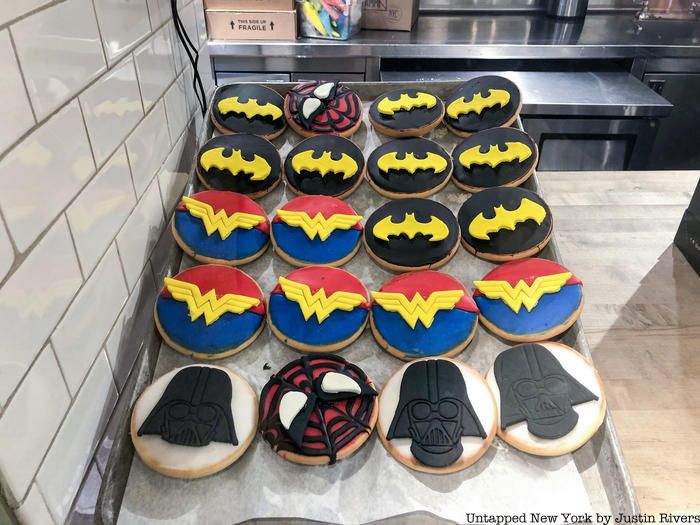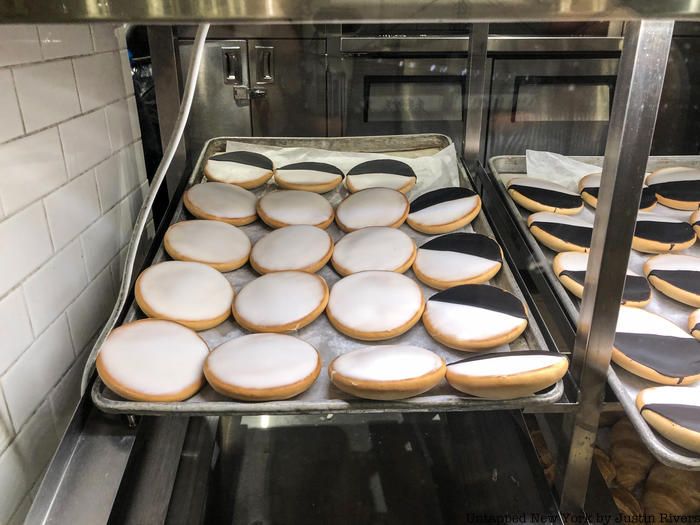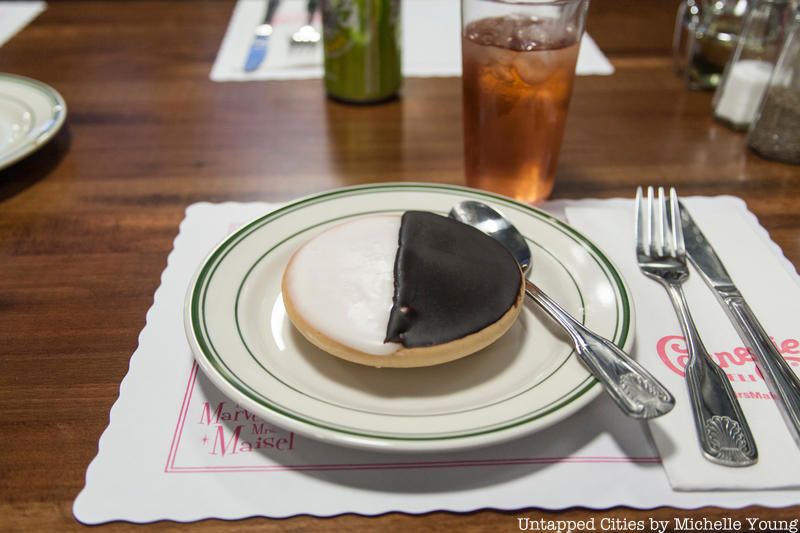NYC’s Forgotten ‘War on Christmas Trees’
Discover how an obscure holiday crackdown affects festive street vendors today!


Black and white cookies scream New York City. They have appeared on New York bakery menus from as early as 1902 and can still be found in delis across the city. They’ve also had a resurgence in pop culture thanks to the popularity of Amazon Prime’s series The Marvelous Mrs. Maisel. The dual-colored cookies were on the menu at The Marvelous Mrs. Maisel Carnegie Deli pop-up. Black and white cookies have been added to the menus of popular New York bakeries like Magnolia Bakery and Zaro’s Family Bakery which has pop culture versions of the cookie. Food columnist for the New York Times Melissa Clark notes that these cookies are not only a New York staple but also an essential component of Jewish culture, stating that “Black-and-whites have been an entrenched part of the very robust Jewish cookie scene in New York City for a century.” Yet, these cookies — if you can even call them that — have a confusing, debated history of creation that raises more questions than answers.

On November 26, learn more about Jewish deli foods and culture by joining Untapped New York Insiders for a members-only docent-led tour of the New-York Historical Society’s new exhibit,“‘I’ll Have What She’s Having’: The Jewish Deli.” The event is free for Untapped New York Insiders!
To start, the black and white “cookie” is technically a cake. According to the late chef and food journalist Molly O’Neill, black and white cookies are “broken promises” in that “they are floury cakes baked in a cookie style.” Food writer William Grimes claims that black and white cookies are “drop cakes” because the “batter resembles the batter for a cupcake, with a little extra flour so that the dough does not run all over the place when it is dropped.”
According to the book Savoring Gotham, the black and white cookie is made of “butter (or shortening), sugar, eggs, flour (both cake and all-purpose), sometimes milk, vanilla, and lemon extracts, maybe orange, with a frosting of confectioner’s sugar, water, bitter chocolate, and a bit of corn syrup.”

Black and white cookies also go by many different names. In upstate New York and New England, people call these cookies “half-moons,” while in the Midwest, they are often called “harlequins.” Additionally, they are called Amerikaner in German.
The black and white cookie is believed to have been created by Glaser’s Bake Shop, which was opened in 1902 by Bavarian immigrants John and Justine Glaser in Manhattan’s Yorkville neighborhood. The bakery closed in 2018 after 116 years and three generations of bakers. According to Eater, Glaser’s cookies had “thick layers of fluffy frosting” and were “a community staple.”

Many others believe, however, that black and white cookies began as “half-moon” cookies that were served at Hemstrought’s Bakery in Utica, New York starting in the first decades of the 20th century. The original bakery has since closed, but the company still sells its prized “original Halfmoon cookies” and has introduced a frozen products division for flash-freezing the cookies. It is not clear the connection between these cookies and the ones at Glaser’s Bake Shop. It is assumed that they share a common German root, but the cookies are distinct enough that many believe them to be two separate cookies. While black and white cookies are flatter with a shortbread base and fondant icing, half-moon cookies are more dome-shaped and use a cake base with frosting.
According to Eater, the history of these cookies gets even more complex. The word “cookie” descends from the Dutch word “koekje” which means “little cake.” It is known that Dutch settlers were eating “little cakes” like gingerbread, which are technically not cookies. Justin Rivers, Untapped New York’s chief experience officer who created our Remnants of Dutch New Amsterdam tour contends that the Dutch would not have been able to access the amount of sugar needed to make the frosting of the black and white cookie. Perhaps, however, there was some forerunner to the black and white cookie that the Dutch enjoyed.

Black and white cookies didn’t reach their height worldwide until the 1940s and 1950s when the black and white cookie was introduced — or potentially reintroduced — to Germany. During and after World War II, American soldiers introduced the black and white cookie to Germans, which likely inspired the cookie’s new nickname, “Amerikaner.” Possibly the term Amerikaner derived from the shape of Brodie helmets worn by US soldiers during the World Wars.
These Amerikaner are often frosted entirely with vanilla and are still eaten today across Germany. Like the cookie’s origin, the name Amerikaner is also unclear. Savoring Gotham notes that the word may have derived from the German word Ammonakaner, which translates to ammonium bicarbonate, a leavening agent. But the author says that this theory is “less plausible” than the simple fact that the cookie from America needed to be differentiated from a black and white cookie the Germans were already enjoying. This word may have also inspired the alternative name Ammonplätzchen, which translates to “ammonia cookies.” One of our German-born readers told us via Twitter that the Amerikaner was sold in his village fifty years ago: “I was born in the communist part. And even there…

“
Black and white cookies have even served as a symbol of racial harmony. In the “Dinner Party” episode of Seinfeld, Jerry states, “Look to the cookie!” as the answer to race relations: “Nothing mixes better than vanilla and chocolate. And yet, somehow, racial harmony still eludes us.” In addition, President Barack Obama nicknamed them “Unity Cookies” in 2008 when visiting a deli in Hollywood, Florida.
It is still unclear whether these cookies originated in the 17th century or the early 20th century, but what we do know is that black and white cookies have become an essential part of not just New York City culture, but also world history, religion, and even racial commentary.
Next, check out 23 of NYC’s oldest world bakeries.
Subscribe to our newsletter